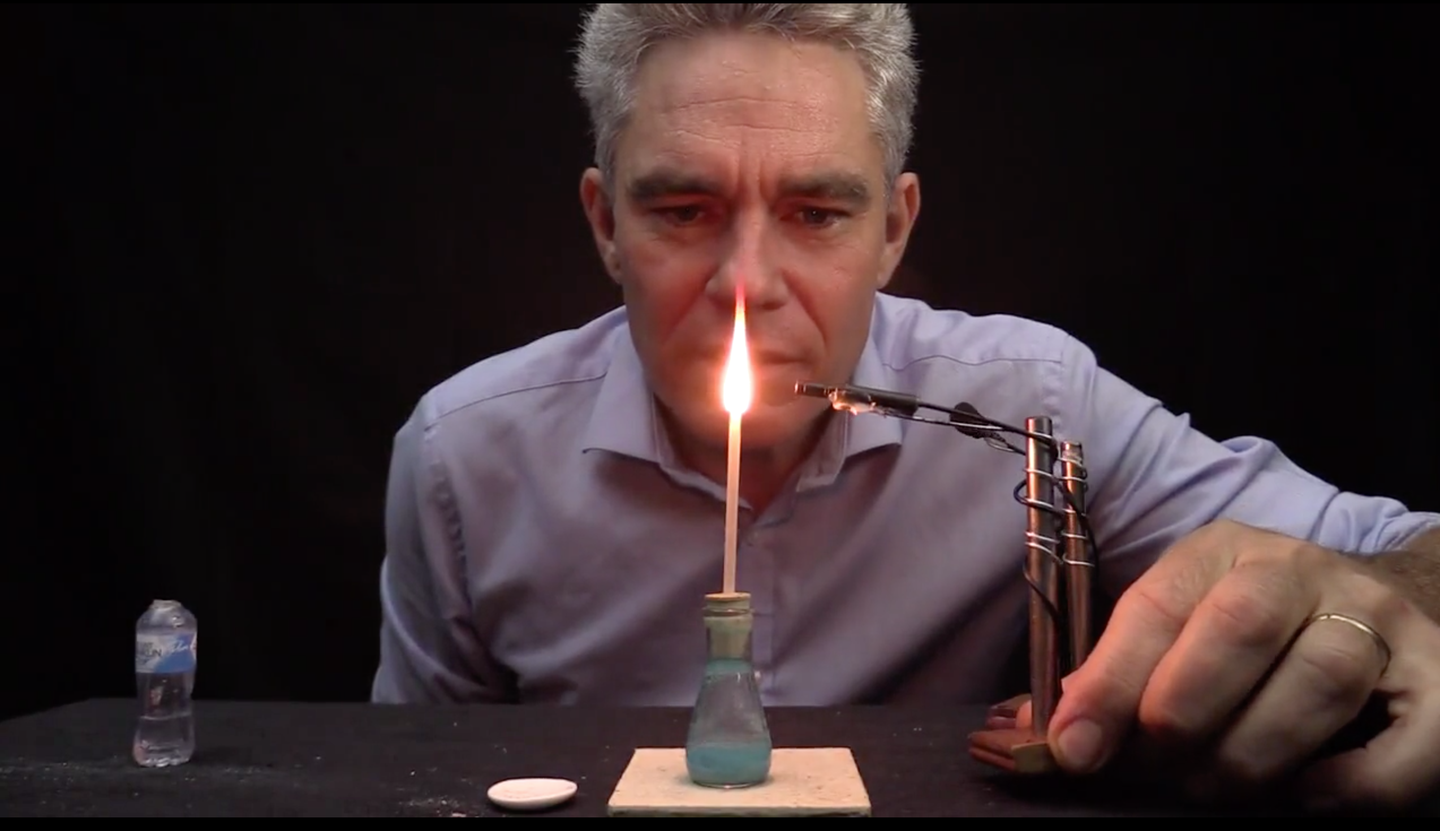Listen to the soothing sounds of an explosive ASMR experiment
This ASMR video has it all: Australian accents, chemistry, and fire.

Whether you think videos of people whispering into high-quality microphones are creepy or soothing, you’ve probably never seen ASMR content as explosive as this. Jacob Strickling, an Australian science teacher who runs the YouTube channel “Make Science Fun,” often does “Tiny Science Videos” using small lab equipment. This time, he set up some highly sensitive microphones next to his beakers.
Strickling whispers softly into one of the microphones, explaining the experiment before dropping a chunk of calcium carbide into a tiny beaker filled with water. The reaction, which produces acetylene gas, creates a satisfying sizzle. The soothing scientist then lights the reaction on fire, and the microphone picks up the soft pops of the burning gas.
An acronym for the not-quite-scientific term “Autonomous Sensory Meridian Response,” ASMR first appeared on YouTube with a “whispering” channel in 2009. Now, the Internet’s bursting with countless videos, and multiple channels on YouTube devoted exclusively to this topic have gained millions of subscribers. ASMR is a little-studied response that some people report having to certain sounds; the best thing to compare it to is the sensation of goosebumps or chills you might get while listening to particularly rousing music. It’s a new subject of research, but early studies on this phenomenon suggest it may indeed have some kind of calming effect.
The goal of ASMR is to relax viewers through quiet entertainment, whether it comes in the form of the sounds of a pretend doctor’s visit, someone playing with objects that make interesting noises, or even gentle singing. Most creators want to make their videos so soothing that viewers will fall asleep, so it’s no surprise that the majority of people who watch them do so at bedtime.